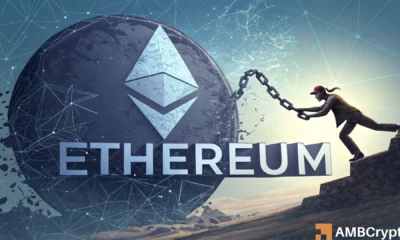Saddle announces end of lock-up period for its $SDL token

Saddle. Finance, a multi-chain decentralized automated market maker (AMM), ended the first vesting stage for its native token, $SDL, on June 23, 2022. All the community members who helped Saddle by providing funds to its liquidity pools will be gaining access to their tokens, enabling holders to trade and transact $SDL.
Users will also be granted the ability to stake $SDL and earn rewards on the saddle. exchange. By staking $SDL users will receive $veSDL tokens in return. Users can also trade SDL or provide liquidity to our SDL/ETH pair on SushiSwap
https://twitter.com/saddlefinance/status/1540077297121771522
Saddle’s solid tokenomics and community governance
Inspired by the popular vote escrowed model, $veSDL is the governance token that will allow the Saddle community to manage the protocol. Stakers will be given the ability to vote and manage the $SDL supply to be added to liquidity pools.
The tokenomics of Saddle were designed so $veSDL decays linearly. Thus, users are incentivized to maintain their funds staked, as staking when the price of the token is lower maximizes yield returns. Another benefit of this structure is that selling pressure for the SDL token is severely diminished, contributing to healthy and sustainable price action.
Although not part of the current proposal, Saddle aims to create further initiatives with the support of its community. These milestones include the migration to on-chain governance, adding liquidity to $SDL through Tokemak, and introducing a new gauge that will enable stakers to unlock extra yield boosts.
Saddle also intends to issue bonds through Olympus Pro to generate more protocol-owned value, launch a borrowing function against liquidity providers, add leveraged yield farming through Rari Capital’s Fuse, and collect airdrops and admin fees from select SEMPI partners.
Finally, the team also includes in its roadmap improvements to virtual swaps, the launch of new liquidity pools for $SDL stakers, and a new service where users can deploy their own customizable Saddle pools.
About Saddle
Saddle is an AMM-based decentralized exchange (DEX) available on the Ethereum, Fantom, Arbitrum, Optimism, and Evmos blockchains. Saddle has facilitated over $2B in transaction volume to date.
Saddle’s DEX is optimized specifically for trading stablecoins and pegged value crypto assets, like wrapped Ethereum (wETH) and Bitcoin (wBTC). The protocol features an easy-to-use interface, making it ideal for both beginners and seasoned DeFi (decentralized finance) investors, and all trades are swift, cost-efficient, and with minimal slippage.
The values of the Saddle team are rooted in community building, decentralization, and elevating the DeFi space. The team aims to help bring AMMs onto any blockchain, as well as bring pegged asset swap primitives to all of DeFi, and is backed by several renowned venture capital firms like Coinbase Ventures, Framework, Polychain Capital, Dragonfly Capital, and more.
Saddle’s code is 100% open source and the team welcomes anyone to contribute to its protocol. Through the recent SEMPI initiative, web 3.0 developers are incentivized to join Saddle’s mission and develop on top of the protocol or fork it into alternative layers.
Another major selling point of Saddle is its robust security. All of its smart contracts have been thoroughly audited by leading blockchain-security companies such as Certik, Quantstamp, and OpenZeppelin.
For more updates, follow:
Disclaimer: This is a paid post and should not be treated as news/advice.






